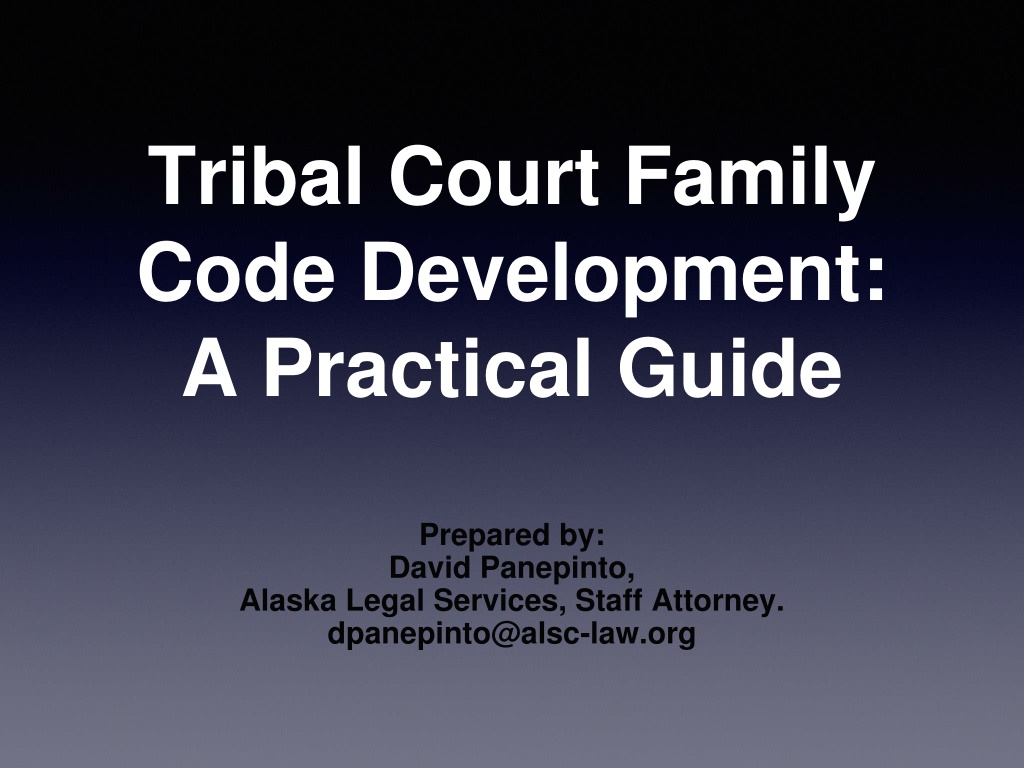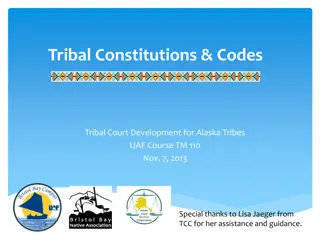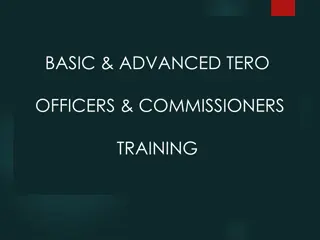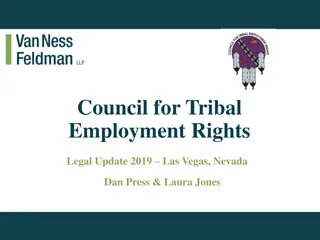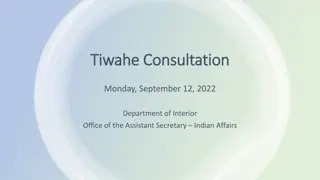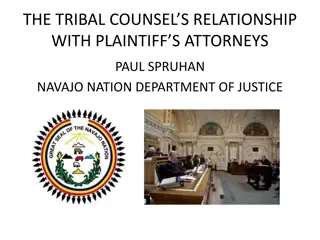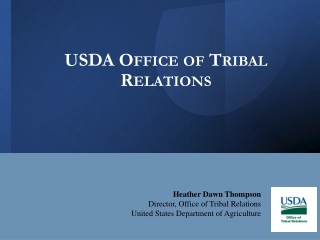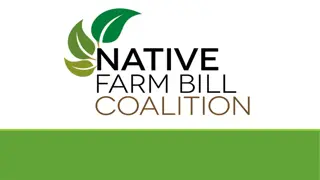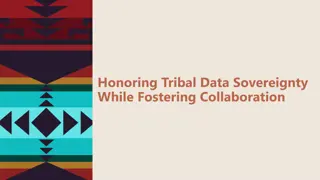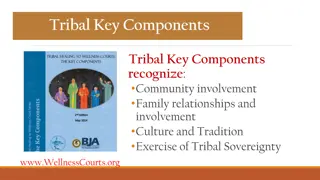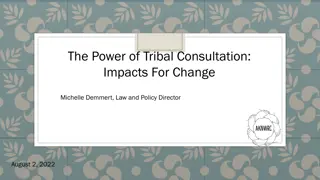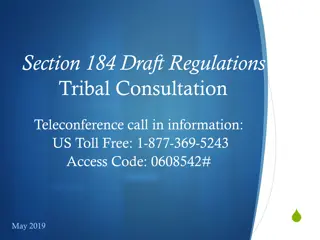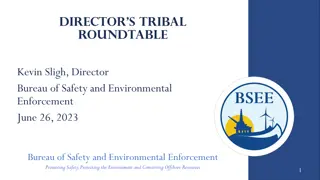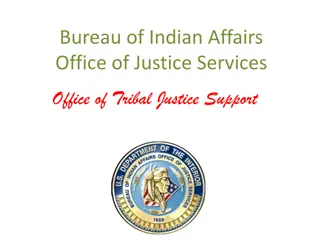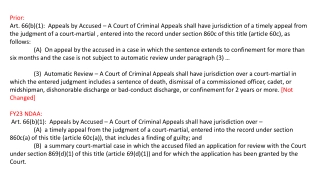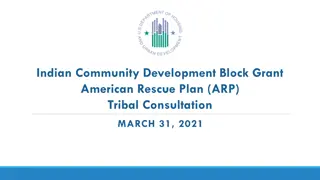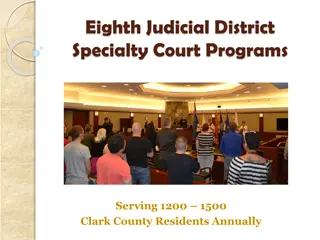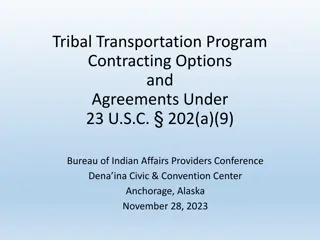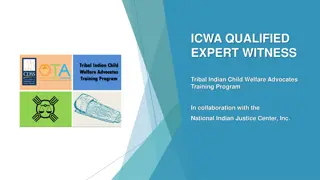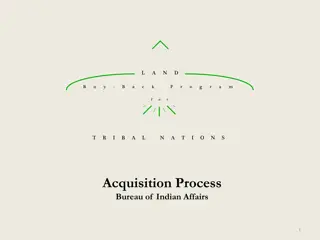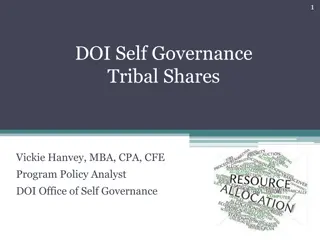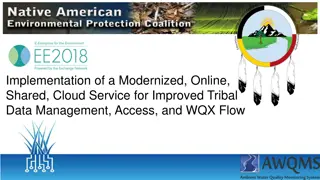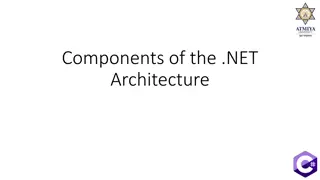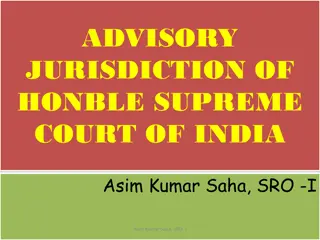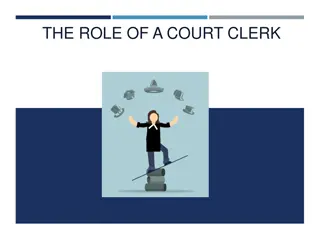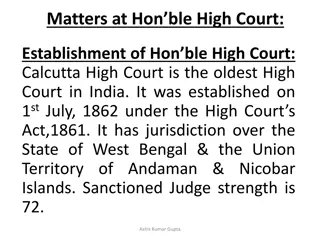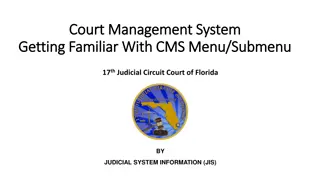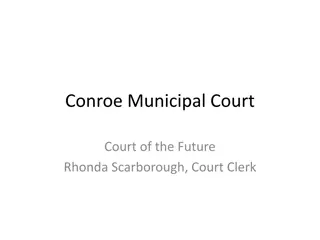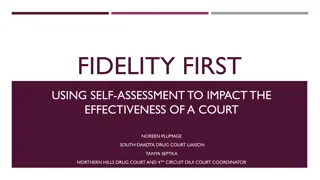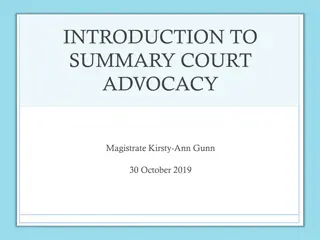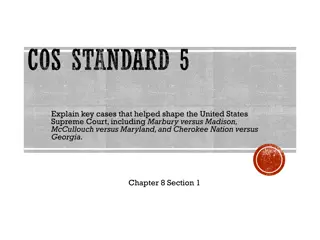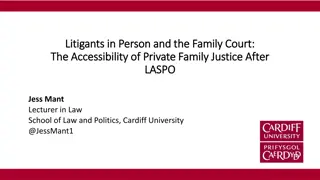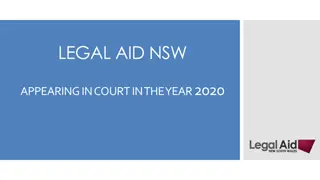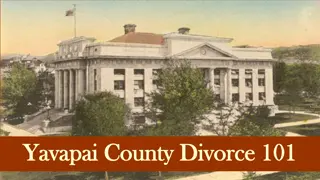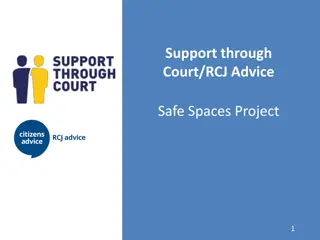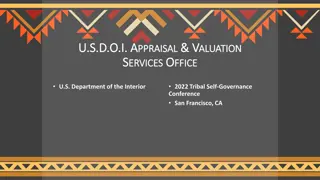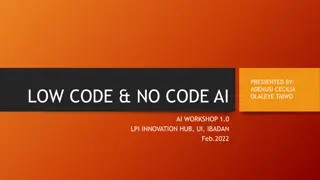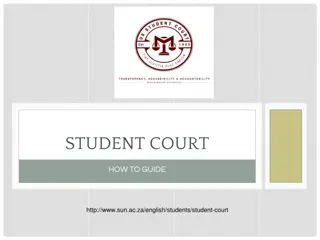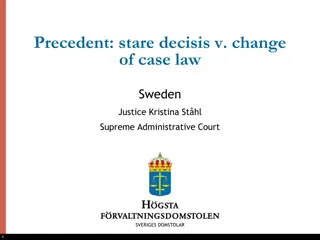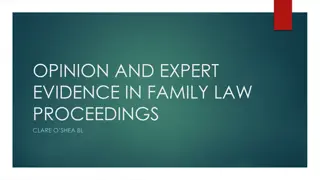Tribal Court Family Code Development: A Practical Guide
Practical guide prepared by David Panepinto from Alaska Legal Services focusing on the development of family codes within tribal courts. The guide covers steps such as understanding judicial codes, involving tribal councils, types of laws, and jurisdictional considerations.
Download Presentation

Please find below an Image/Link to download the presentation.
The content on the website is provided AS IS for your information and personal use only. It may not be sold, licensed, or shared on other websites without obtaining consent from the author. Download presentation by click this link. If you encounter any issues during the download, it is possible that the publisher has removed the file from their server.
E N D
Presentation Transcript
Tribal Court Family Code Development: A Practical Guide Prepared by: David Panepinto, Alaska Legal Services, Staff Attorney. dpanepinto@alsc-law.org
Power Within the Tribe: Tribal Members Tribal Members Constitution Constitution Tribal Council Tribal Council Tribal Court/ Codes Tribal Court/ Codes
Step 1: Judicial Code Does the tribal court have a judicial code? Not necessary, but it is helpful. If so, know your code and constitution. Do they place limits on family law matters?
Step 2: Who Decides? Who will be involved in creating the family code? Tribal Council? Committee? Community? Code drafting can be used as a way for a community to further define and understand its culture, if they re directly involved.
Step 2: Types of Law Written Law vs. Unwritten Law Exercising sovereignty means the tribes gets to do things its own way. What do the tribal members want?
Step 2: Type of Law Sitka Children s Code Sitka Children s Code
Step 3: Authority to Hear a Case Jurisdiction = the court s authority to hear a case. Personal Jurisdiction: WHO can the court hear? Subject Matter Jurisdiction: WHAT can the court hear?
Step 3: Authority to Hear a Case Judicial code probably addresses personal jurisdiction. What about subject matter jurisdiction? custody, adoptions, divorce, guardianships, domestic violence.
Step 3: Authority to Hear a Case Figure out what s important to the tribe. Involve the tribal members! Don t add a topic unless you really want it. Probably a good idea to start small, then expand.
Step 4: Statement of Purpose Short explanation of why and how the tribe wants to address the issue. Not required, but it provides guidance: Don t make a judge guess about how they should reach a decision.
Step 4: Statement of Purpose TCC- Sample Domestic Relations Code
Step 4: Statement of Purpose TCC- Sample Domestic Relations Code
Step 4: Statement of Purpose CCTHITA- Children and Family Code
Step 5: Definitions What does the code allow the tribal court to do? We don t know unless the important words in the code are defined. Words matter!
Step 5: Definitions Define every word you think reasonable people might disagree on, and then define some more. Even if the meaning of a word is easily understood by most people in a community, write your code as if it applies to people outside the community, because meaning changes.
Step 5: Definitions Definitions help the judges understand what cases they can accept and the factors they need to consider when making a decision. More importantly, it helps ensure a fair process for the parties involved. If there is a disagreement, you can point to the code. Consistency & reliability.
Step 5: Definitions Child Adult Family Members Child Welfare: What is abuse? neglect? abandonment? Best interests?
Step 5: Definitions CCTHITA CCTHITA- - Children and Family Code Children and Family Code
Step 5: Definitions CCTHITA CCTHITA- - Children and Family Code Children and Family Code
Step 5: Definitions Best Interests Determination: Best Interests Determination: Kenaitze Kenaitze Domestic Relations Code Domestic Relations Code
Step 6: Procedures A good code provides clear procedures: Informs judges what rules they must follow. Informs parties what rules they must follow and what they must prove. Also makes sure that everyone is treated the same.
Step 6: Procedures Should have clear guidelines for the following: Petitions Notice Hearings Orders Legal Standards
Step 6: Procedures Make sure the code provides due process: Adequate Notice Opportunity to be heard Fair tribunal
Step 6: Procedures Section 2. Contents of Child Custody Petition Section 2. Contents of Child Custody Petition The Petition shall provide the following information: The Petition shall provide the following information: 1. The name, address and age of the child; and 1. The name, address and age of the child; and 2. The names and addresses of the child's parents and any 2. The names and addresses of the child's parents and any custodians of the child; and custodians of the child; and 3. The names and addresses of any other person or tribe with a 3. The names and addresses of any other person or tribe with a specific interest in the child; and specific interest in the child; and 4. The reason the Petitioner is requesting custody of the child; and 4. The reason the Petitioner is requesting custody of the child; and 5. The facts that make the Petitioner believe that the best 5. The facts that make the Petitioner believe that the best interest of the child require that a custody Order be issued by interest of the child require that a custody Order be issued by Court; and Court; and 6. A statement of which tribe(s) the child is a member or with which 6. A statement of which tribe(s) the child is a member or with which tribe(s) the child is eligible for membership. This statement tribe(s) the child is eligible for membership. This statement include facts that indicate that the include facts that indicate that the Itsa Itsa Tribe is the tribe significant contacts with the child. significant contacts with the child. the the should should Tribe is the tribe with the most with the most TCC Sample Domestic Relations Code TCC Sample Domestic Relations Code
Step 6: Procedures Kenaitze Kenaitze Domestic Relations Code Domestic Relations Code
Step 6: Procedures CCTHITA CCTHITA- - Marriage, Divorce, and Custody Marriage, Divorce, and Custody
Step 7: Confidentiality Consider the need for privacy in sensitive areas. Which cases will be confidential? Child Welfare Adoptions
Step 8: Child Welfare Considerations Tribes have exclusive jurisdiction over child welfare cases if child is a ward of the tribal court. Overlapping jurisdiction otherwise. Either the state or the tribe starts a case. Whoever starts it, keeps it. However, tribe has right to intervene or request transfer from state court.
Step 8: Child Welfare Considerations ICWA rules don t apply in tribal court; tribe creates its own rules/ protections. Exercise sovereignty!
Final Thoughts: Avoid legal-speak Avoid templates Publicize Amend and review code periodically
David Panepinto Staff Attorney Alaska Legal Service Corp. dpanepinto@alsc-law.org (907) 586-5964 This project was supported by Grant No. 2015-WR-AX-0015 awarded by the Office on Violence Against Women, U.S. Department of Justice. The opinions, findings, conclusions, and recommendations expressed in this publication are those of the author(s) and do not necessarily reflect the views of the Department of Justice, Office on Violence Against Women.
